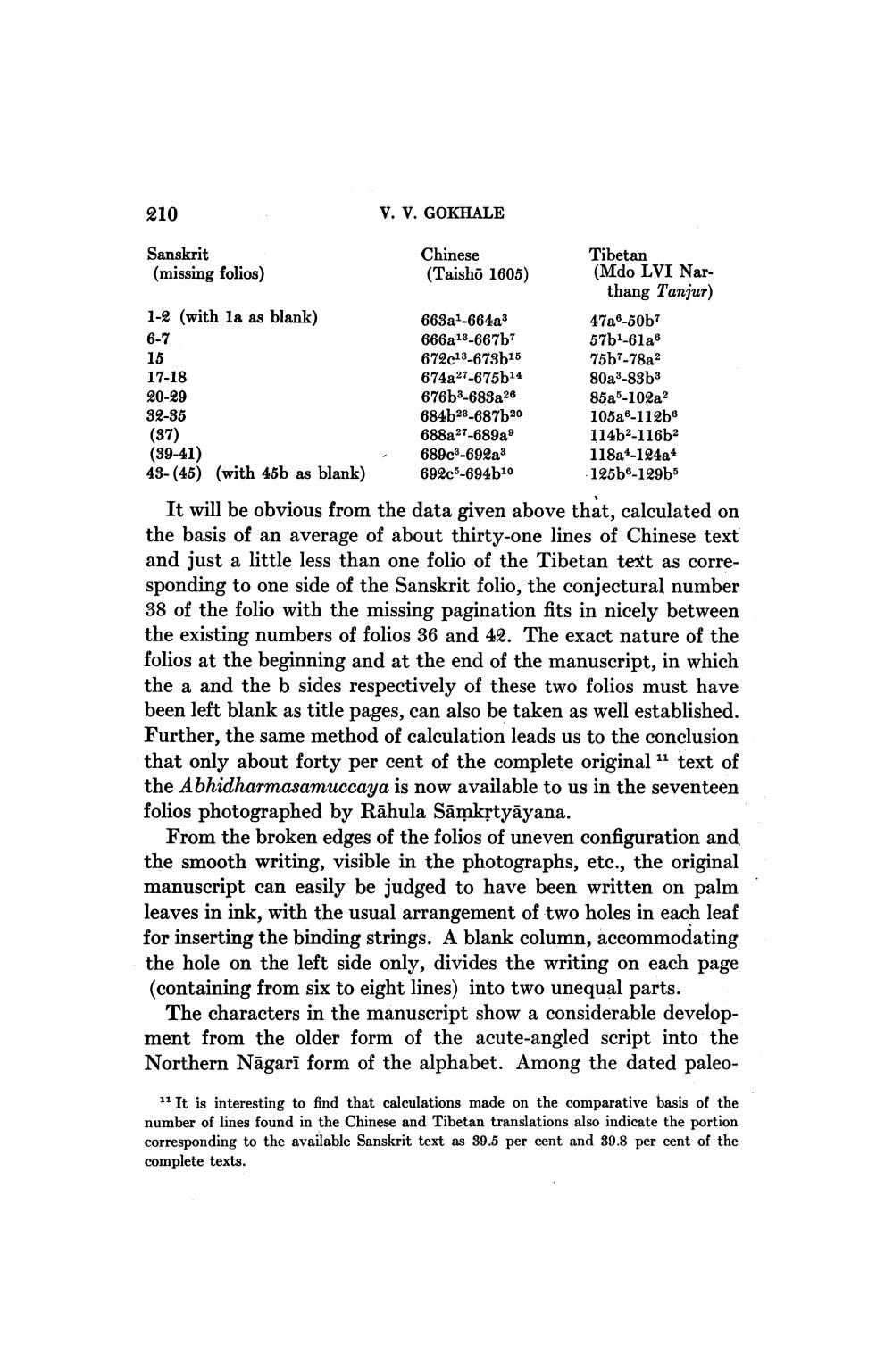Book Title: Rare Mmanuscript Of Asamgas Abhidharma Samuccaya Author(s): V V Gokhale Publisher: V V Gokhale View full book textPage 4
________________ 210 V. V. GOKHALE Sanskrit (missing folios) Chinese (Taishõ 1605) 1-2 (with la as blank) 6-7 15 17-18 20-29 32-35 (37) (39-41) 43-(45) (with 45b as blank) 663a1-664a3 666a 13-667b7 672c13-673b15 674a27-675b14 676b3-683a 26 684b23-687b20 688a27-689a 689c3-692a3 692c5-694510 Tibetan (Mdo LVI Nar thang Tanjur) 47a6-50b7 57b1-61a6 75b7-78a2 80a3-83b3 852-102a2 105a6-11266 114b2-116b 118a-124a* 125b6-129b5 It will be obvious from the data given above that, calculated on the basis of an average of about thirty-one lines of Chinese text and just a little less than one folio of the Tibetan text as corresponding to one side of the Sanskrit folio, the conjectural number 38 of the folio with the missing pagination fits in nicely between the existing numbers of folios 36 and 42. The exact nature of the folios at the beginning and at the end of the manuscript, in which the a and the b sides respectively of these two folios must have been left blank as title pages, can also be taken as well established. Further, the same method of calculation leads us to the conclusion that only about forty per cent of the complete original 11 text of the Abhidharmasamuccaya is now available to us in the seventeen folios photographed by Rāhula Sāmkstyāyana. From the broken edges of the folios of uneven configuration and the smooth writing, visible in the photographs, etc., the original manuscript can easily be judged to have been written on palm leaves in ink, with the usual arrangement of two holes in each leaf for inserting the binding strings. A blank column, accommodating the hole on the left side only, divides the writing on each page (containing from six to eight lines) into two unequal parts. The characters in the manuscript show a considerable development from the older form of the acute-angled script into the Northern Nāgarī form of the alphabet. Among the dated paleo 11 It is interesting to find that calculations made on the comparative basis of the number of lines found in the Chinese and Tibetan translations also indicate the portion corresponding to the available Sanskrit text as 39.5 per cent and 39.8 per cent of the complete texts.Page Navigation
1 2 3 4 5 6 7
